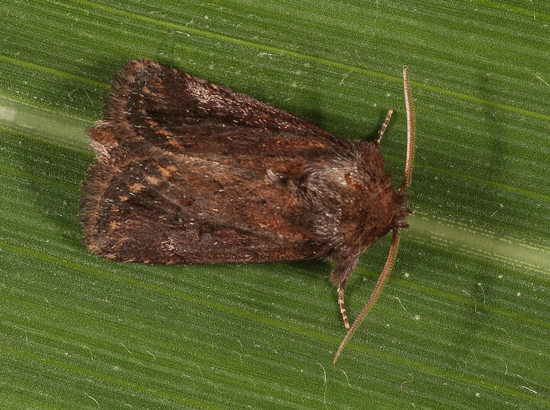Credit: IRD / B. Le Ru
In East Africa, the caterpillars of two butterflies, Busseola fusca and Chilo partellus , represent a major threat for maize, the main food crop in the region. As recently borne out by the work of IRD researchers and their partners in Kenya, their distribution varies with altitude. Busseola fusca prefers mountain sides, whereas Chilo partellus predominate at low altitude; a new study has revealed this phenomenon. Temperatures play a role in several ways, leading to the conclusion that the populations of these two types of pest will grow in the coming years.
Less sturdy plants at high altitude
Thanks to the marked altitude steps of the East African mountains—genuine open-air laboratories— IRD scientists and their Kenyan partners from ICIPE, KEFRI and the University of Nairobi simulated the effects of climate change on crops. They recently revealed that the richness of silica of maize plants is lower at high altitude. This element, extracted from the soil, is essential for the rigidity of the leaves and stems of grass family crops such as maize, enabling them to defend against pests. However, at a low temperature, the plant does not absorb through the roots and incorporate silica as much. At high altitude, heavier rainfall is also a factor, meaning silica is leached and depleted from the soil.
Caterpillars impacted to varying degrees
In East Africa, two types of butterfly, Busseola fusca and Chilo partellus , pose a threat to the production of maize, the main food crop in the region. The first predominates at altitude, while the second proliferates in open country. As the researchers have recently shown, temperatures consequently significantly impact their source of alimentation. Consequently, maize that is richer in silica is more difficult to digest and can prevent caterpillars from feeding themselves during their young larval stage. However, the study shows that in this respect, the two species of pests are not identical. The development of Busseola fusca on silica-rich maize plants slows down, while Chilo partellus adapts very well, which explains their distribution based on altitude.
Orienting combat strategies
This spatial distribution may develop in the coming years within a context of climate change. An increase in atmospheric temperatures at altitude could improve the assimilation of silicon by maize and thus fend off the Busseola fusca , for the benefit of the Chilo partellus , which would as a result extend its area of distribution upstream.
Anticipating the future growth of the populations of crop depletion pests is paramount for the food safety of the countries concerned. In particular, this research will make it possible to better orient the biological control strategies that must be implemented. For instance, each depletion pest corresponds to a species of parasitoid wasp.
More information: P.-A. Calatayud et al. Can climate-driven change influence silicon assimilation by cereals and hence the distribution of lepidopteran stem borers in East Africa?, Agriculture, Ecosystems & Environment (2016). DOI: 10.1016/j.agee.2016.03.040
Provided by Institut de Recherche pour le Développement (IRD)






















